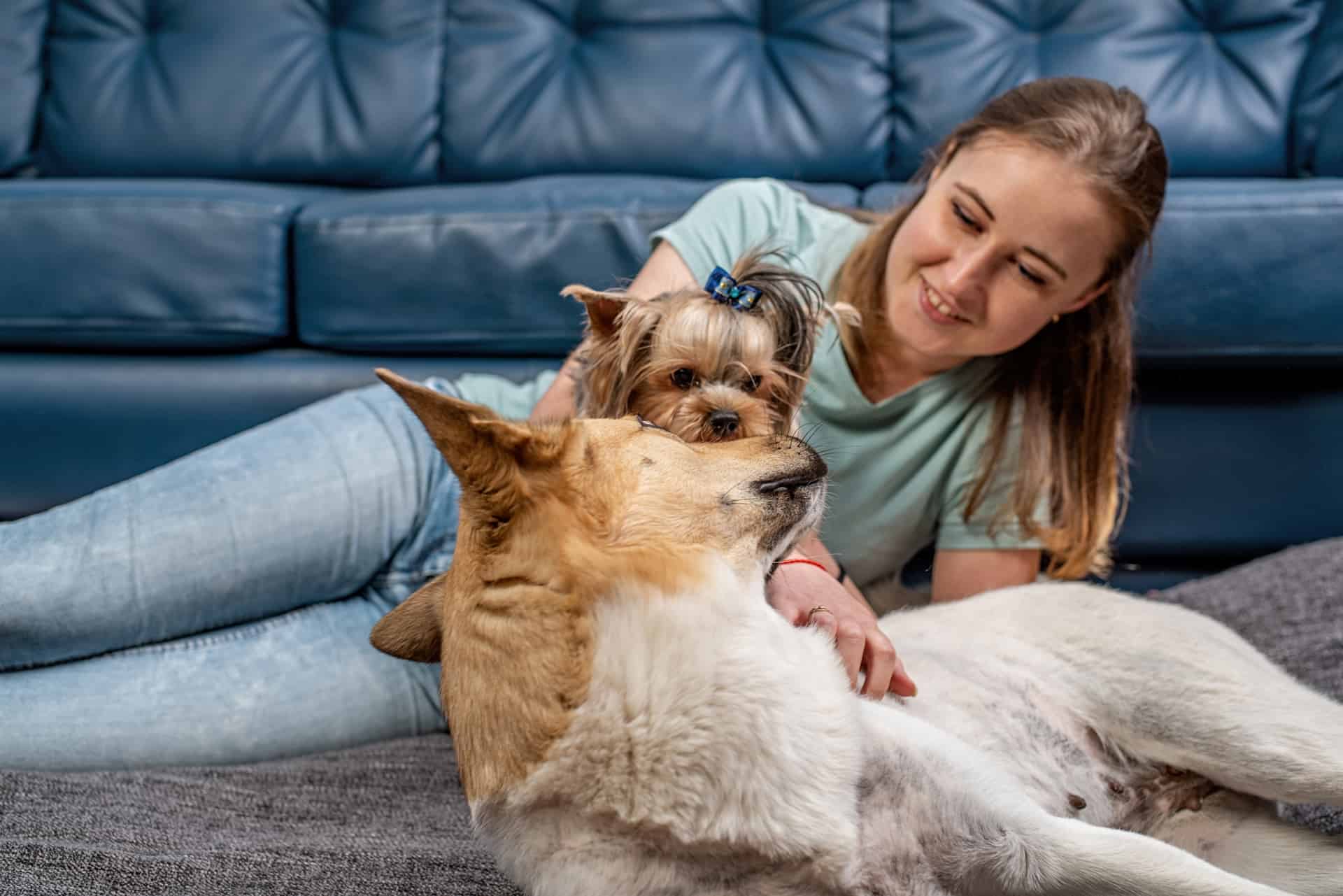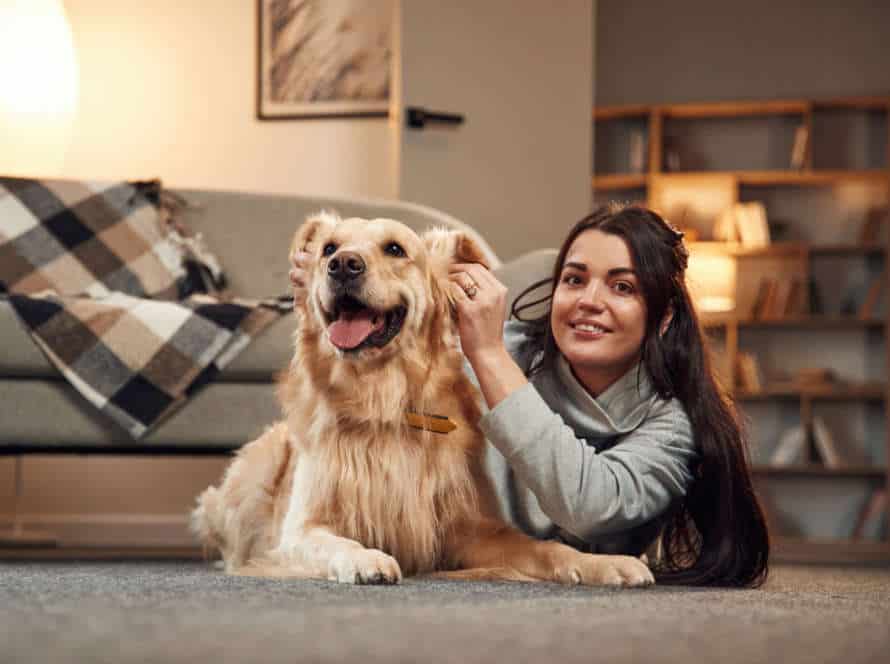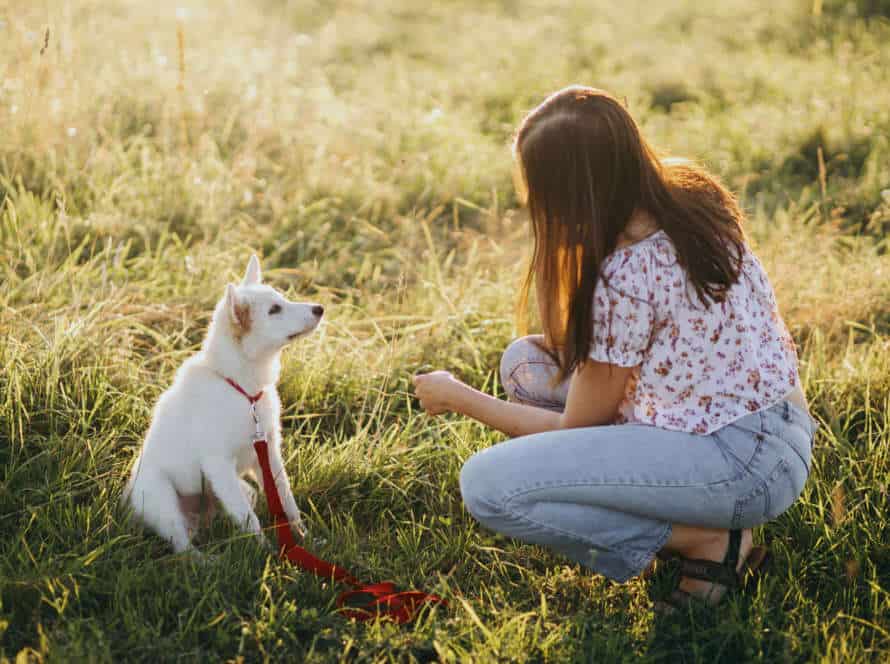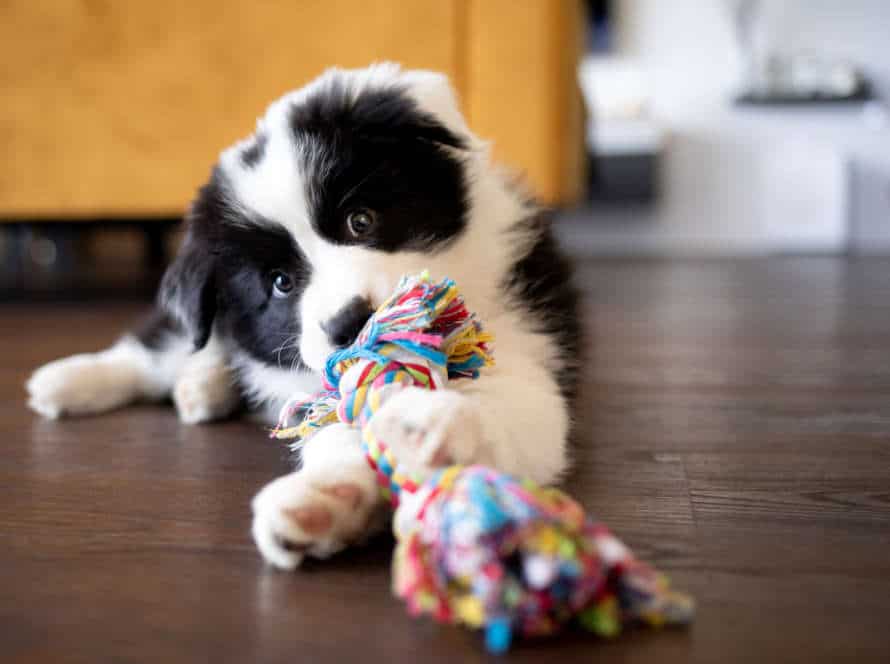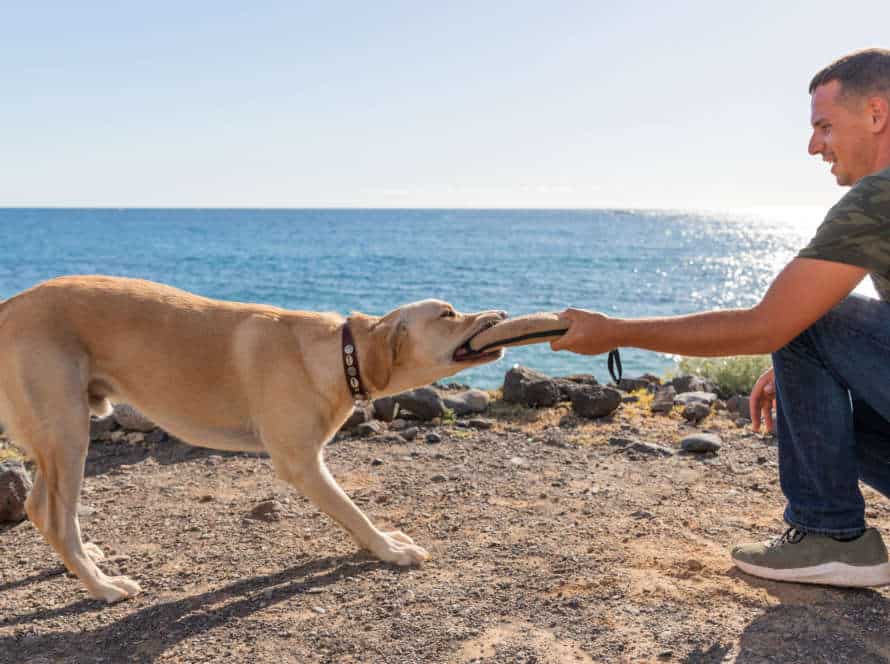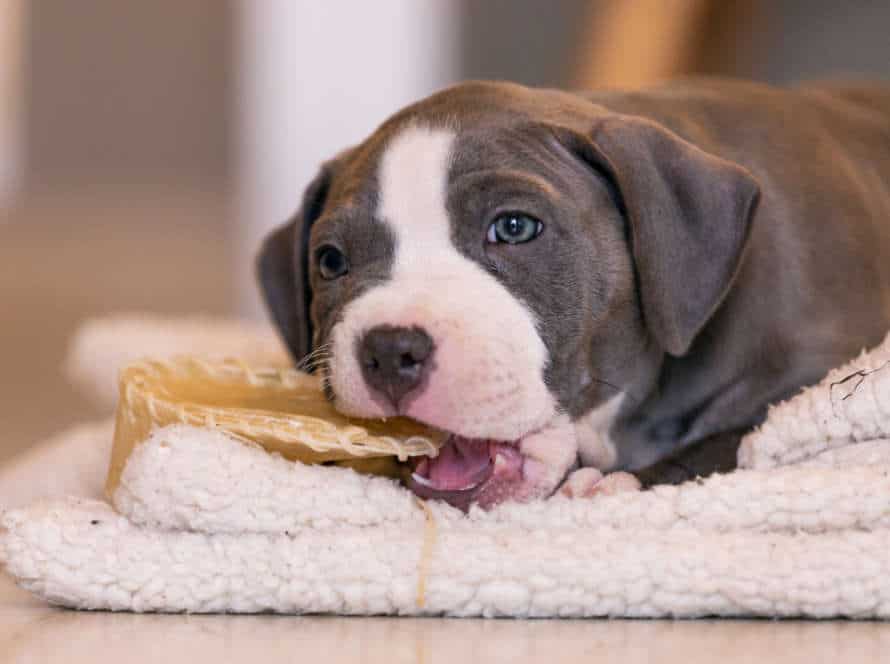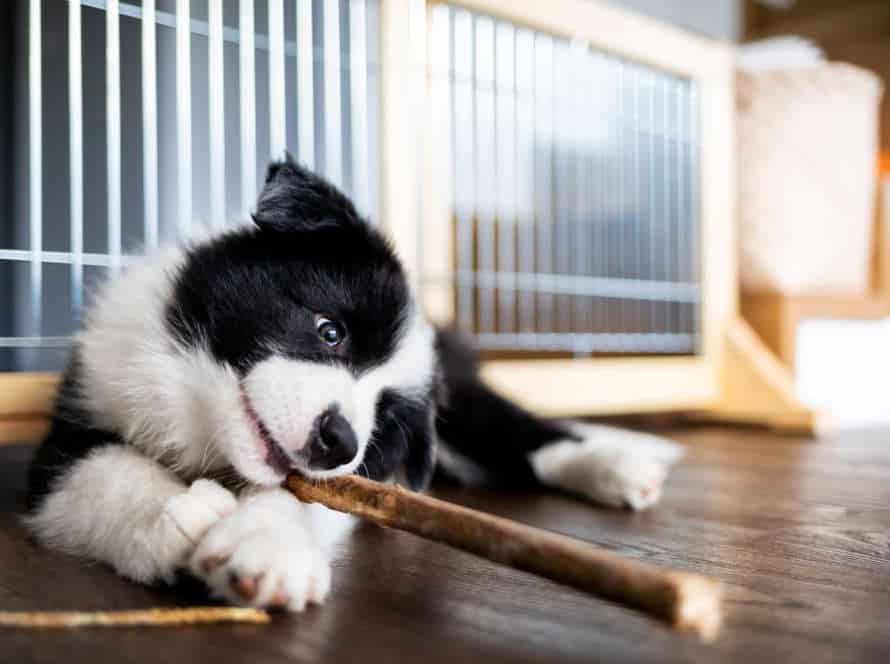The Pros and Cons of Different Indoor Potty Options
Indoor potty choices provide convenience for pet owners and flexibility for pets, but they also have their pros and cons. Let’s look at the different indoor potty options:
- Pee Pads: Convenient and simple to use. Varied sizes, and can be easily replaced when soiled. But, the pads can move around, and not be absorbent enough for heavy use.
- Grass Pads: Provide a more natural environment for pets, indoors or outdoors. Low maintenance, but can lead to leakage and bad smells.
- Indoor Turf or Sod: Simulate a real outdoor environment, plus good drainage. Durable, and straightforward to clean. But, can be costly to install, and needs regular replacement of the sod.
- Artificial Grass Mats: Low-upkeep, and easy to clean. A realistic outdoor look and feel, but can cause odors and bacteria if not cleaned properly.
When selecting an indoor potty option for your pet, cost, durability, odor, and maintenance requirements are factors to consider. Don’t forget to oversee your pet, and always clean up after them. This ensures a safe and healthy living environment.
Indoor Potty Options for Dogs
House-training your pup can be difficult, especially if you live in an urban area with scarce outdoor space. Fear not – there are several indoor potty alternatives! These span from pee pads to indoor litter boxes. Let’s evaluate the advantages and disadvantages of each choice, so you can determine which is optimal for your pup.
Puppy Pads
Are you looking for an indoor potty option for your pup? Puppy pads may be the solution! However, as with all other indoor potty options, puppy pads have their ups and downs.
Pros:
- Convenient: Place puppy pads in any room of your home.
- Simple: Set-up is a breeze, no need to train your dog.
- Saves Time: No need to take your pup out for potty breaks.
Cons:
- Pricey: May be expensive in the long run.
- Wasteful: Generates lots of waste, not environmentally friendly.
- Training Issues: May prolong training and confuse your dog.
It’s important to weigh the pros and cons before deciding which indoor potty option is best for your pup!
Indoor Turf Systems
Indoor turf systems are a great choice for pet owners who want to offer their pup an inside solution for going potty. There are several options available and each has its own ups and downs.
Real grass is the favored option. It’s easy to take care of, eco-friendly, and provides a natural feel for dogs. However, it’s hard to manage and smells can be tough to control.
Artificial grass is low maintenance and cost-effective. Plus, it’s durable and can take a lot of use without damage. But, cleaning it may be difficult and you’ll need to do deep cleans to control odors.
Patch systems are easy to use, cleaner than real grass, and provide a secure area for pets. This turf can be replaced easily and doesn’t require much maintenance. But, they can be pricey, and controlling odors may be tough.
An indoor litter box is low-maintenance, user-friendly, and lets you monitor your pup’s excretion process. But, odor control can be a problem and your pup will need to be trained to use it.
So, consider all the pros and cons, then pick the best indoor turf system for your furry friend based on maintenance, cost, and effectiveness.
Dog litter Boxes
Dog litter boxes are becoming popular as indoor potty options. They have advantages over other potty options, but also some drawbacks.
Pros:
- Convenient: Easy to clean and maintain.
- Odor Control: Absorb and control odors.
- Eco-friendly: More environmentally friendly than disposable pads.
Cons:
- Cost: Expensive to purchase and maintain.
- Training: May need more training for use.
- Space: Take up more room than pads.
Overall, dog litter boxes are a great option. But you need to consider the pros and cons for your dog and household.
Pros and Cons of Puppy Pads
Puppy pads are a go-to potty option for many pet owners. They’re easy to use and maintain, and convenient for owners who need to leave their pet alone for a long while. But, it’s important to think about the pros and cons of using puppy pads. Let’s check ’em out!
Pros of Puppy Pads
Puppy pads are great for pet parents who can’t take their puppies outside regularly! Here are the pros:
- Convenient: For those with limited access to the outdoors.
- Effective: Absorbs urine and feces.
- Easy to clean: Dispose of soiled ones and replace.
- Affordable: Inexpensive compared to other indoor potty options.
Pro Tip: Don’t rely on puppy pads alone! Take your pup outdoors when possible. Plus, use treats and positive reinforcement for faster potty training! Less stress for you and your furry friend.
Cons of Puppy Pads
Puppy pads: a convenient solution? Think again! Before relying on them, consider the cons.
- Costly: Replace often if your pup has accidents.
- Not Eco-Friendly: Puppy pads create a lot of waste.
- Inconsistent: Sends mixed messages & leads to confusion.
- Regression: Pups may become too reliant on them.
Weigh the cons & pros to find the best potty training method.
Pros and Cons of Indoor Turf Systems
Indoor turf systems are gaining popularity for potty training pets. They offer a designated area in the home for their restroom needs.
Advantages? Easy to clean. Disadvantages? Let’s delve into the pros and cons.
Pros of Indoor Turf Systems
Indoor turf systems are rising in popularity for their many advantages, making them a great option for pet owners seeking indoor potty spots. Pros:
- Easy to clean – soap and water do the job.
- Safe for pets – non-toxic materials make them safe.
- No odors – designed to stop bacteria growth and odors.
- Durable – high-quality materials make them last.
- Convenient – no need for daily walks.
Yet, you must think about the maintenance required and your pet’s size before buying one. Pro tip: avoid using harsh chemicals or bleach as they can harm the material and your pet. Natural cleaning solutions are best.
Cons of Indoor Turf Systems
Indoor turf systems are becoming popular for potty training pets. However, there are a few cons. One is odor. If not cleaned and maintained, odors can make the indoor environment uncomfortable. Cleaning an indoor turf system takes time and effort. Over time, it can also need replacing, increasing cost.
Still, there are advantages. It helps potty train pets, and provides a convenient alternative to outdoor potty breaks when weather is bad. Cleaning and maintenance can reduce associated cons. Pro tip: Use enzymatic cleaners to break down odor-causing bacteria.
Pros and Cons of Dog Litter Boxes
Dog litter boxes are an up-and-coming way for pet owners to potty train their furry friend indoors. They provide convenience, easiness and a highly sanitary solution. But, like any other potty choice, there are pros and cons. Let’s examine them.
Pros:
- Convenient
- Easy to use
- Hygienic
Cons:
- Not suitable for larger dogs
- Requires regular maintenance
- Can be expensive
Pros of Dog Litter Boxes
Dog litter boxes are becoming popular with pet owners who live in apartments or have limited outdoor space. Benefits? Convenience, hygiene, and training. But, potential downsides too. Odor, cost, and space.
Tip: Consider the needs of your pet when deciding between indoor potty options.
Cons of Dog Litter Boxes
Dog litter boxes can be a convenient indoor potty solution for pet owners. However, there are some drawbacks to consider. Here are a few:
- Messy: Cleaning is needed frequently to avoid bad smells and bacteria. Litter or waste may also be tracked outside the box.
- Training: Dogs may not take to using a litter box, especially if they’re used to going outside. Training may take time and patience.
- Expense: Dog litter can be pricey and you may need to buy a special box designed for dogs.
- Size: Depending on your dog’s size, the litter box may need to be bigger, taking up more space in your home.
- Noise: Some dogs may make noise by digging or kicking litter out of the box.
Weigh the pros and cons of different indoor potty options to decide what’s best for your pet and lifestyle.
Factors to Consider When Choosing an Indoor Potty Option
Choosing an indoor potty for your pet? Tough decision! There are many factors to think about. Today, there are lots of indoor potty systems on the market. Each has its own pros and cons. It’s important to think about your pet’s needs before picking one.
In this article, we’ll look at the pros and cons of different indoor potty systems. So you can make the best decision for your pet.
Dog Breed and Size
When selecting an indoor potty for your pup, size and breed are key factors to consider. Here’s a look at the pros and cons of each option:
- Pee Pads: Small breeds and puppies may find pee pads convenient. Clean-up and disposal is simple. But larger breeds may find them too small.
- Grass Pads: These offer a more natural feel, but can be pricey to replace and need maintenance.
- Litter Boxes: Cost-effective and easy to maintain. Not ideal for dogs that dig or chew.
- Artificial Turf: Durable and easy to clean. Works for all breeds and sizes. But doesn’t provide an authentic feel, and can be costly.
Take into account your pup’s size, personality, and potty habits before deciding which indoor potty to go for.
Training and Behavior Issues
Training your furry friend to use an indoor potty? Consider these factors before deciding! Pros & cons of different potty options to help you pick.
- Pee pads – Disposable, affordable and easy to use. But, pets may confuse them with other absorbent surfaces, and require regular changing.
- Indoor grass – Natural-looking and eco-friendly. But, can be messy and may need regular replacement.
- Litter box – Easy to clean & reduce odors. But, pet may have trouble transitioning from one litter type to another.
Think carefully, to choose the best fit for you and your pet!
Lifestyle and Living Arrangements
Indoor potty choices provide pet owners a convenient solution for their furry-friend’s peeing and pooping needs. But, choosing the right one requires thinking about certain factors and weighing the merits and drawbacks of each option.
Factors to consider:
- Pet size and breed
- Your living space
- Your schedule
- Home’s flooring
Pros and cons of options:
- Puppy Pads: Pros – simple to use and get rid of. Cons – may teach dogs to use indoors.
- Indoor Turf Pads: Pros – more natural-looking and tough. Cons – hard to clean and manage.
- Dog Litter Boxes: Pros – easy to clean and odor-free. Cons – may be confusing for pooches.
- Real Grass Patch: Pros – like outdoor grass and easy to manage. Cons – needs regular cleaning and replacing.
Weighing up the pros and cons and taking into account the factors above will guide you to make the right choice for your pet and lifestyle.
Tip – Train your pet to use it well, to avoid accidents!
How to Train Your Dog to Use an Indoor Potty
Train your pup to use an indoor potty? A great idea! Accidents in the home will be prevented. Plus, less time spent outside. But which potty option is the best? Let’s explore! Pros and cons of different indoor potty choices – so you can make the best decision for both you and your pup!
Introduce the Indoor Potty
Introducing your pooch to an indoor potty is a great solution if you live in an apartment, or have limited outdoor access. Here’s how you can train your dog to use an indoor potty, and the pros and cons of different options.
Training Your Dog to Use an Indoor Potty:
- Choose a spot, e.g. bathroom or laundry.
- Pick the right indoor potty, like pee pad, grass patch, or litter box.
- Put them on it often, especially after meals or naps.
- Use positive reinforcement, like treats or praise, when they use it.
- Keep it clean regularly.
Pros & Cons of Different Indoor Potty Options:
- Pee Pads: Easy to use, disposable, affordable. But may not teach dogs to differentiate between indoors & outdoors.
- Grass Patches: Mimics outdoor grass, easy to use. But requires frequent change, bad odor, hard to clean.
- Litter Boxes: Great for training puppies/small dogs, easy to clean, odor control. But needs litter change, not suitable for large dogs, has a learning curve.
Remember – dogs need consistency. So stick to a routine, & don’t scold them for accidents.
Use Positive Reinforcement
Positive reinforcement is a great tool for teaching your pup to use an indoor potty! Here’s how it works and the pros and cons of some more common indoor potty options.
Positive reinforcement means rewarding your pup when they use the potty indoors. This could be with praise, treats, petting and more!
Here are some popular indoor potty options:
- Puppy pads: Easy to find, convenient to use. Best for small dogs with small messes. But, over time, these can be expensive and some dogs may think items like rugs are the potty.
- Artificial grass: Easy to clean, less likely to confuse your pup. Plus, it has a realistic feel and is more natural. But, it can be costly and the grass can break down over time.
- Litter boxes: Popular with cats, but can also work with small dogs. Cleaning is easy and the litter lasts longer. But, some dogs may get confused and litter can get scattered around.
No matter the option, positive reinforcement helps your pup learn quickly and happily! So, give them lots of love and treats, and playtime to create a nurturing environment.
Be Consistent and Patient
Training your pup to use an indoor potty can be tough. But, consistency and patience can help you succeed! Here are some tips:
- Pick an indoor potty that fits your pup’s breed, age, and size.
- Place it in a spot they can access easily.
- Say “go potty” to encourage them to use it.
- Give them treats and praise when they use it correctly.
- Clean it often to keep it hygienic and motivate them to use it.
Consistency and patience are key. Stick to a routine and remain positive. Your pup will get the hang of it soon!
Tips for Maintaining a Clean and Hygienic Indoor Potty Area
Choosing the right indoor potty spot for your pet is key for a clean, hygienic area. Multiple options exist. Pros and cons of each will be discussed here. Examples include: litter boxes and indoor potty pads. Advantages and disadvantages of each type will be examined.
Regular Cleaning and Sanitization
Cleaning and sanitizing regularly is key to having a clean and hygienic indoor potty area for your pets. No matter the type of potty you choose.
Here are some tips to keep it tidy:
- Clean the potty area at least once a day. Or more if necessary, depending on how many and how big your pets are.
- Use pet-safe disinfectants to get rid of bacteria or other germs.
- Change litter or pads often and throw it away in the trash can or compost bin.
- Put a washable or disposable mat below or around the potty area to stop spills, leaks, or accidents from ruining your floors or carpets.
Pro tip: Give rewards like treats, toys, or praising when they use the potty area to encourage them.
Use of Odor Neutralizers
Odor neutralizers are key for keeping your pet’s indoor potty area clean and hygienic. It doesn’t matter if you use pee pads, grass patches, or litter boxes – odor neutralizers can help get rid of bad smells and keep your home smelling fresh.
Here are some tips for using them:
- Look for pet-specific odor neutralizers. They are better than regular air fresheners.
- Get a neutralizer that is safe for pets and doesn’t contain any harmful chemicals.
- Spray the neutralizer directly onto the potty area, covering all surfaces.
- Reapply it as needed, especially after your pet uses the area.
Besides odor neutralizers, it’s essential to clean the potty area regularly and dispose of waste quickly. This stops bacteria and germs from building up, which can create bad odors and be dangerous for your pet and family.
Proper Disposal of Waste
Getting rid of pet waste is vital to having a tidy and hygienic potty space for your pet. Here are some tips to help you do it properly:
- Grab solid waste with a scooper or plastic bag. Then, throw it away in a sealed trash bag.
- Use absorbent materials like pee pads or sod to collect urine, before tossing in a trash bag.
- Don’t flush pet waste down the toilet. It can lead to germs getting into the water.
- Always remember to wash your hands after handling waste. This will stop the spread of germs.
If you follow these steps, you can keep your indoor potty area safe and clean for you and your pet.
Frequently Asked Questions
Q: What are the pros and cons of using a puppy pad for indoor potty training?
A: The pros of using a puppy pad are convenience and affordability, but the cons include potential mess and the need for consistent replacement.
Q: Are there health concerns with using synthetic grass as an indoor potty option?
A: While synthetic grass is relatively easy to maintain and keeps odors down, there are concerns about the chemicals used in its production and potential difficulty in cleaning the area thoroughly.
Q: What are the benefits of using a litter box for indoor potty training?
A: The benefits of using a litter box include its familiarity to cats, easy maintenance, and the ability to control the location of the potty area. However, litter boxes can be messy and may not be familiar to dogs.
Q: Can outdoor potty training be used in conjunction with indoor potty options?
A: Yes, combining outdoor and indoor potty options can be an effective way to potty train a pet and can also prevent accidents when the pet cannot make it outside.
Q: What are the pros and cons of using a potty turf system for indoor use?
A: The pros of using a potty turf system include durability and ease of cleaning, but the cons include a potentially high initial cost and the need for consistent maintenance.
Q: Which indoor potty option is best for larger dogs?
A: Generally, potty turf systems or litter boxes with high walls are better suited for larger dogs, as they provide enough space and protection from potential messes.

